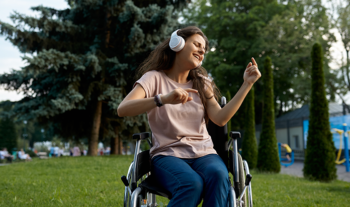Everyone knows that you need to see an orthodontist to straighten your front teeth and have a nice smile—but there are other reasons that you may benefit from a visit to the orthodontist. Here are some of them:
There are many reasons for orthodontia besides a nice smile
First, orthodontists spend as much or more time getting a proper fit of the back teeth as they do with the front teeth. Getting the posterior teeth to mesh properly is important for the longevity of the dentition.
Poorly aligned back teeth are more susceptible to adverse tooth wear. In extreme cases, repairing these worn teeth can require root canal therapy and crowns
Second, crooked teeth are more at risk for periodontal or gum disease. Conditions such as crossbites can put adverse forces on teeth that can make them become loose and cause recession of the gum tissue.
Periodontal disease becomes worse if there is traumatic occlusion. Teeth that have tipped into spaces for missing teeth also have compromised gingival health.
The orthodontist can correct the alignment of the teeth and ensure that the forces when biting are optimal.
Improving airway and jaw function
Another area that the orthodontist can help beyond a nice smile is help with a healthy airway and obstructive sleep apnea.
Many people suffer from obstructive sleep apnea. Often, the cause of the airway being closed off is due to the tongue blocking the airway.
Orthodontists can help with this condition in two ways. One is to help make sure the tongue has adequate room. People with constricted narrow arches don’t have as much room for their tongue. Orthodontic treatment to widen the arches may help accommodate the tongue.
Another way they can help is by providing oral appliances for people who are CPAP intolerant. These appliances are very similar to the appliances that we use to treat orthodontic problems. These removable appliances are worn while sleeping.
They aim to move the lower jaw forward. This is because the tongue and the associated muscles are attached to the lower jaw. Moving the jaw forward pulls the tongue forward. This opens a person’s airway so they can breathe better.
Related Content: What You Need to Know About Snoring and Jaw Development
Airway issues in children
Children can also suffer from airway issues. They should not snore while sleeping.
Children who have difficulty breathing while sleeping can have a number of problems. They are often diagnosed with ADHD. They may have discipline problems in school, failure to thrive, and even bed wetting.
These children often have these issues due to enlarged tonsils and adenoids. They can also often have very narrow upper jaws.
The orthodontist can help by expanding the upper jaw. The other side of the roof of the mouth is the floor of the nose so widening the jaw not only makes more room for the tongue but also widens the floor of the nose and makes breathing easier. Jaw widening along with proper treatment by an ENT and their pediatrician can make a world of difference for these children.
TMJ dysfunction
Many orthodontists provide treatment for temporomandibular joint dysfunction (TMJ) pain and headaches. Treatment may only involve an orthotic to be worn while sleeping. But sometimes more extensive therapy is necessary including the use of ultrasound, cold laser, muscle manipulation, and relaxation techniques.
In addition, for some people with occlusal conditions that may be contributing to their temporomandibular disorder (TMD), the orthodontist can correct the bite and create a healthier condition that will make the person less reliant on orthotics.
Replacing and restoring teeth
The services of an orthodontist can be very helpful prior to extensive restorative dental work. Replacing and restoring teeth is easier and results in a better outcome when the teeth are properly aligned.
Teeth tend to drift when a tooth is removed. The teeth on each side tend to tip into the space of the missing tooth. Putting a replacement tooth in this altered space can result in a compromised result.
Orthodontic treatment can move the teeth back to where they belong so that a normally shaped tooth can be inserted.
In the case of a tooth that is broken off at the gum line, the orthodontist can extrude the tooth so that a crown can be placed and the tooth saved.
The orthodontist can also close the space for a missing tooth so that a replacement is unnecessary. This is often done in the case of missing upper lateral incisors. In appropriate cases, the upper canine teeth can be moved to the lateral’s position and reshaped to take the lateral incisor’s place.
An orthodontist is useful in the case of dental trauma. Teeth that have been displaced by a blow to the facial area can be repositioned by the orthodontist and stabilized so that they can heal and be maintained.
The bottom line
An orthodontist’s job goes far beyond just creating beautiful smiles. They are an important part of the dental team for optimal dental and general health.
This story was first published on March 18, 2017. It has been updated for republication.
James M. Crouse, DDS, PA
Website:
http://www.drcrousesbraceplace.com/
James M. Crouse, DDS, PA, is owner of The Brace Place in Salisbury, Md., offering outstanding, affordable orthodontic care to children, teens, and adults. Dr. Crouse utilizes the latest technological advances in orthodontics to ensure that patients receive the most effective care possible
He is a Top 1% Invisalign Provider and has treated over 1,000 people with the Invisalign appliance. This "Elite" designation places him in the top 1% of Invisalign providers in North America.










Comment will held for moderation